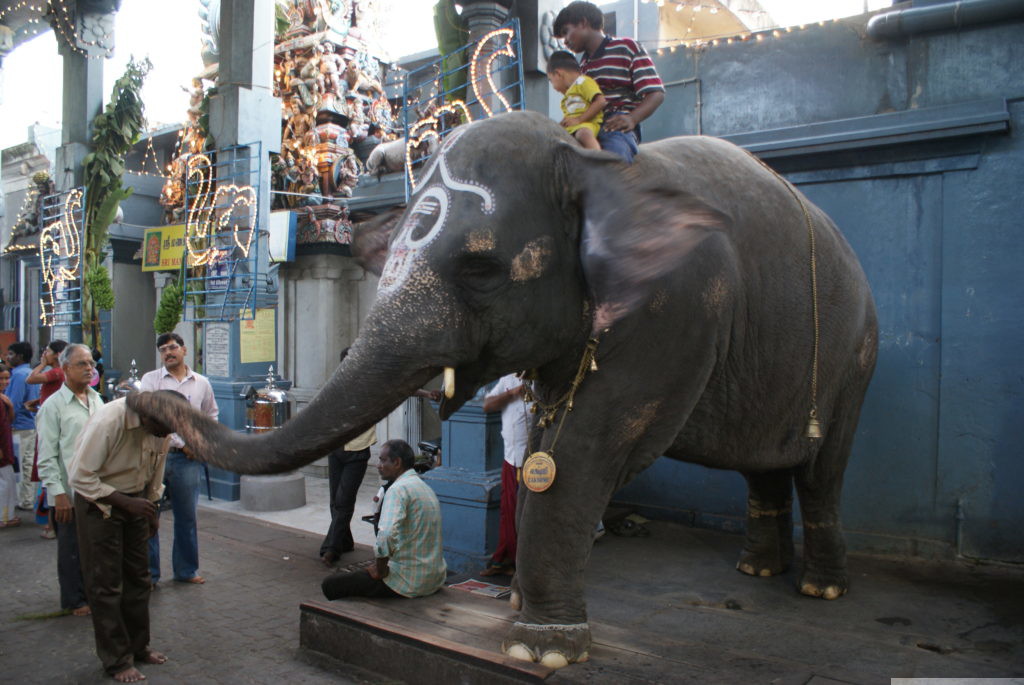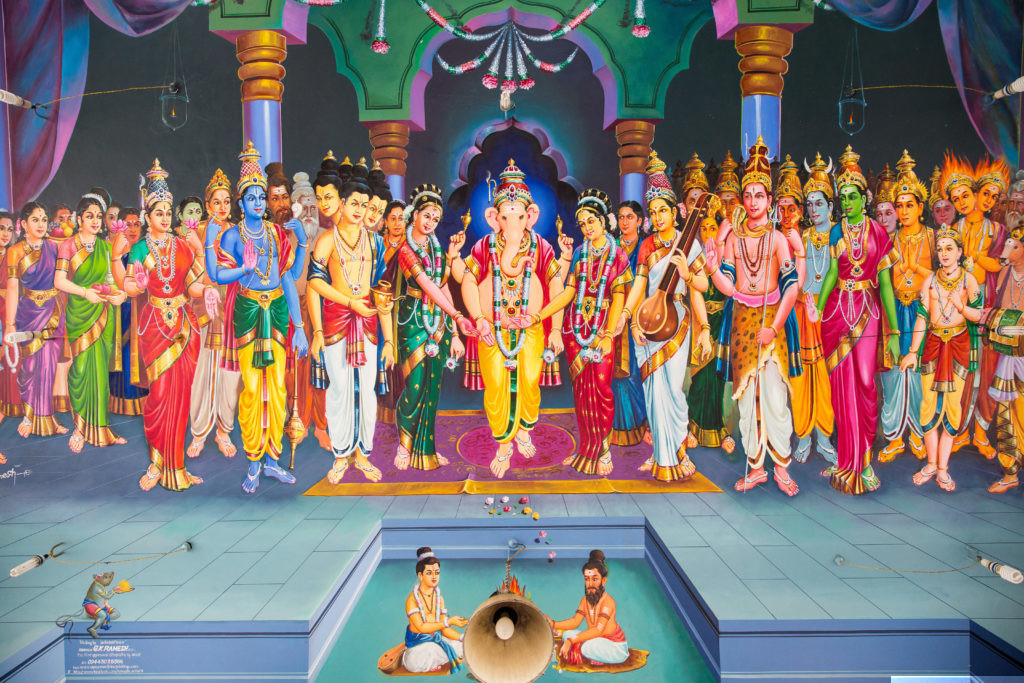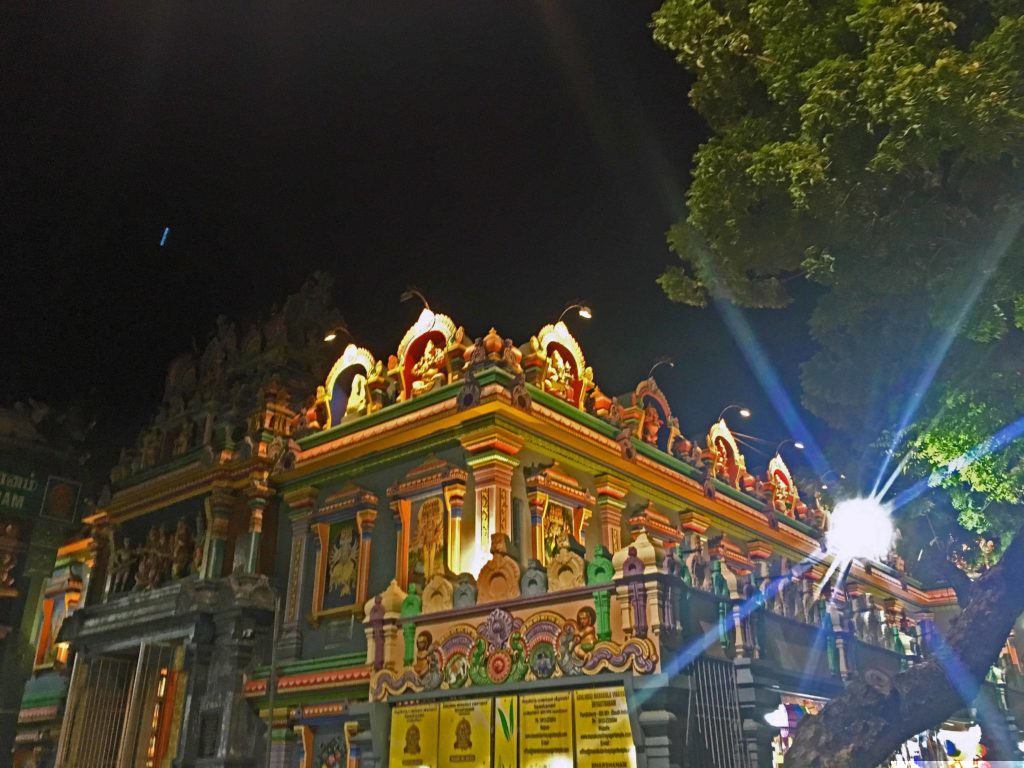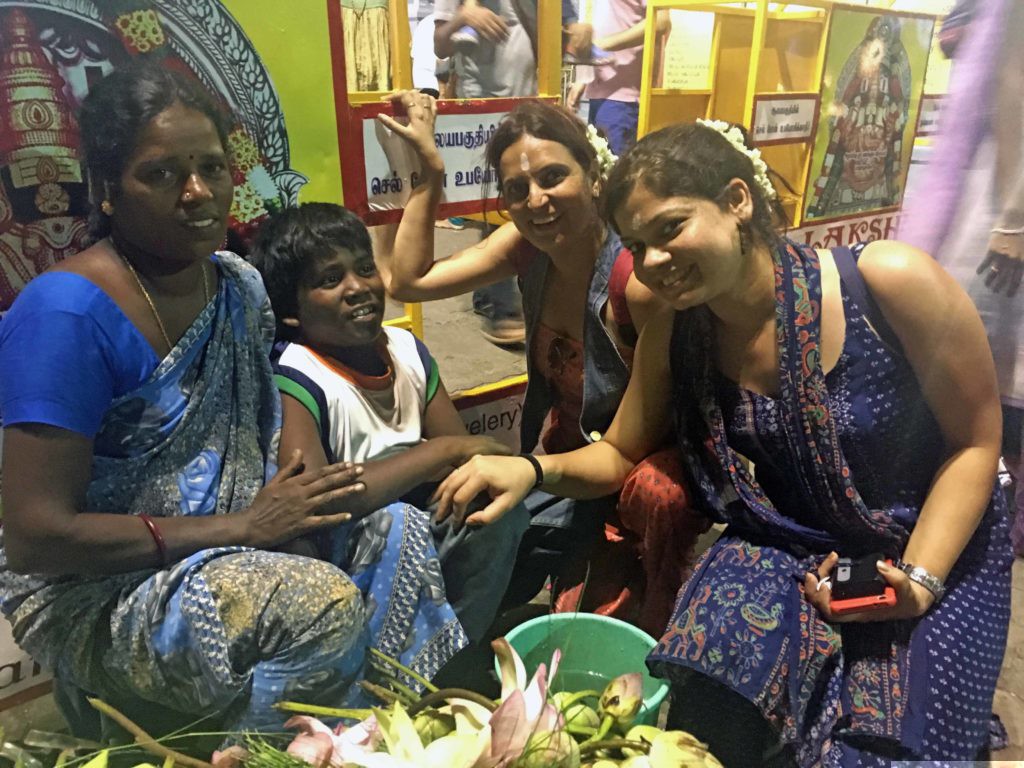Ganesh Chaturthi seems to be a perfect time to unfold the tale of a Ganesha Temple I brought back from Pondicherry. While roaming around the French Quarters of Pondicherry, I noticed Manakula Vinayagar Temple standing tall and colorful, it all it’s glory. With a long queue of devotees waiting to get in and converse with Lord Ganesha, this one seemed to be more than just another temple. A heritage walk I did revealed some very interesting details about Manakula Vinayagar Temple, some that were easy to believe and some, which took their own sweet time to reconcile with reality.
Manakula Vinayagar Temple dates back to earlier than 16th Century, when the French came to Pondicherry. Though , back then, the temple wasn’t as grand as its current form but it sure meant a lot to the people of Pondicherry. Being located in what was supposed to be the French part of the town, various attempts were made to destroy Manakula Vinayagar Temple. Located just a few meters away from the ocean, the French uninstalled the Ganesha idol and put it away it the sea. But, legend goes that they could not succeed in this mission as the statue came back to the shore the next day. They tried once again, but the same results repeated. Next, they took the idol to the middle of the ocean and left it there, only to find it back to the shore in a couple of days. By now, the people of Pondicherry had started protesting to not destroy their temples. Soon, it dawned on the rulers that there might be a larger scheme of things than meets the eye, they understood the power of divine Ganesha and agreed to bring the idol back to where it belonged. Manakula Vinayagar Temple was the only temple that survived in what was the French Quarters of the town.
‘Manal’ means sand and ‘Kulam’ means pond near the sea in Tamil. Another long lost tale suggests that there was a pond near the temple which was always filled with sand, given it’s proximity to the ocean. Hence the temple came to be named as Manakula Vinayagar Temple. I would rather go with a different piece of information which I came across during the very interesting heritage walk. ‘Mana’ and ‘Akula’ could be two words merged into one, which combine to make up ‘Manakula’. If we take the meanings of the two words and merge them, they would somewhat translate to ‘according to the desires of the heart’ which seem to suggest that everything one wishes for at this Ganesha Temple, comes true. That kind of justifies the unending serpentine queue of people, waiting for their turns patiently to get inside.
Manakula Vinayagar Temple hosts sixteen different forms of Ganesha. Like most South Indian Temples, first thing that one notices about this one is the vibrant colors which are almost soothing to the eye. There’s another very interesting fact about this temple that an elephant( representation of Lord Ganesha) named Lakshmi stands at the temple door every evening and blesses the devotees who come to seek God here. Give Lakshmi a coin, and she puts her trunk on your head to bless you. Give her a banana, and she gulps it down, forgetting to do the blessing routine. I’ve seen that happen at least three to four times while I was at Manakula Vinayagar Temple. Blessings can be easily equated with coins I guess.

Credits – Shutterstock
There was a sense of calm that engulfed me at this temple even though I am not a religious person,or someone who believes in rituals. I just sat there, admiring the huge colorful walls with motifs of Gods and Goddesses. I could have stared at those beautiful walls for hours, partly because I was very tired after the three hour heritage walk in the humid weather, and partly because there was something about this temple that made sense – it was like a calm in chaos and how much ever I try, I will not be able to put it in words.

Credits- Shutterstock
I stared at the Gods, trying to make sense of it while devotees conversed with him. It took some time to absorb the energy of Manakula Vinayagar Temple and I came out of the temple with a desire to return someday during the day time to capture these colors of faith in the my camera. Outside, the scene was similar to any religious site, with shops selling flowers, incense-sticks, sweets and other offerings to be made to God in return of a favor or a mere conversation. There were many women selling gajra or jasmine flowers woven into a thread, to be adorned in the hair. Promptly, I bought one and the heart swelled with nostalgia of a time when a very dear friend’s mother used to make one for me, every time she made a gajra for herself or my friend. Both of us ten year olds used to love the flowers in our hair and made quite a fashion statement with them in the colony. I missed my old friend, but then I also had a new one who played along and sported a gajra with me.
The young boy in the picture above insisted on putting the flowers in our hair. We played along while his mother could not stop smiling. With the little English/Hindi they knew, it was difficult to converse but then smiles don’t really need a language,do they? I could not stop thinking of the old saying ‘Ghar se masjid hai bohot duur, chalo yun kar lein, kisi bachche ko hansaya jaye‘ meaning the place of worships is far from home, so let’s make a child happy today. It’s one irony that I found this saying coming back to me at the doors of a temple. Irony, or just a perception to look at it?




Straight from the heart, this post, Akanksha. But then that is what you are , Direct Dil Se, right? 🙂
Thank you so much, so glad you read 🙂 <3
Great and candid description! I loved this temple. The ceilings , walls were so vibrant and colourful! Not to forget Lakshmi 🙂
Thanks Divsi! I too loved this temple, guess it is easily the most colorful one I have ever seen. Such vibrancy all over 🙂
Great temple!
Yes,, really loved the play of colors here. Must visit if you visit Pondicherry